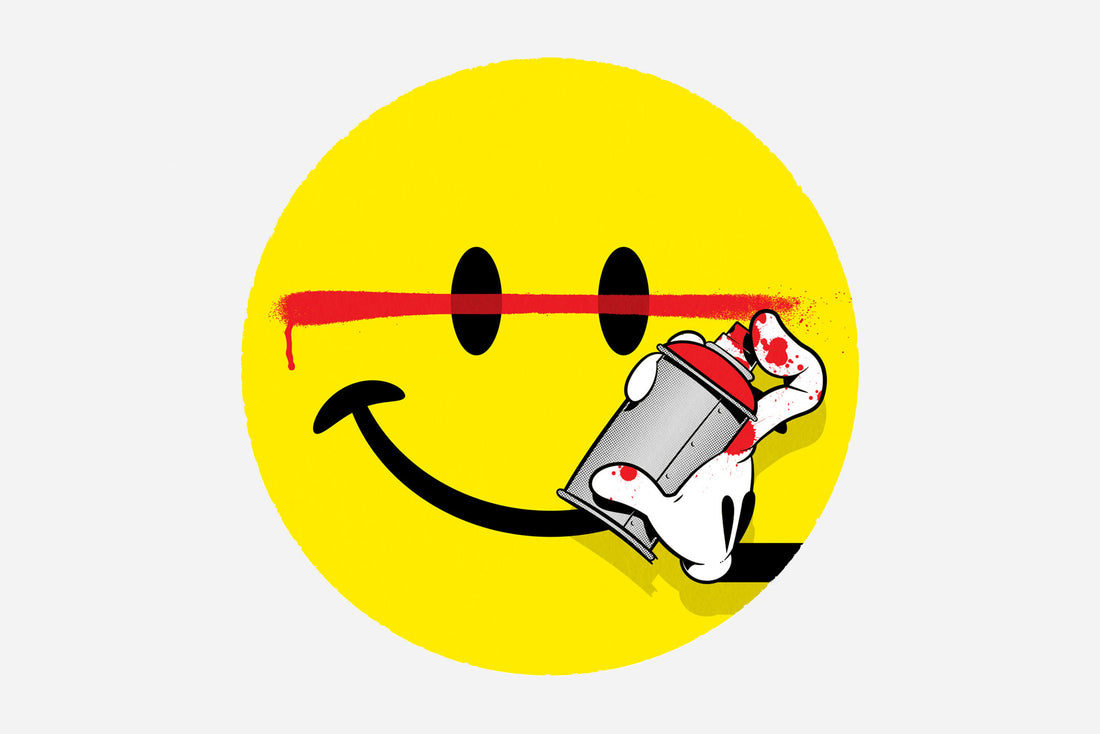Slick stands as one of the great conceptual satirists of our era. His oeuvre serves as a masterclass in parody and satire, incisively commenting on social and political issues. His practice spans a stunning range of output from meticulously precise paintings and exquisitely finished sculpture that mines pop culture in the tradition of Jeff Koons or KAWS - to large scale murals, commercial works, and multiples.
Slick's happy face works are a notable facet of his expansive portfolio, showcasing his ability to infuse familiar symbols with subversive meanings. Reinterpreting the classic icon, Slick uses this imagery to explore themes of consumerism, societal complacency, and the darker undercurrents of popular culture. His happy faces are not just benign symbols of happiness; they are often depicted with a satirical twist, sometimes distorted or accompanied by unsettling elements, thereby challenging the viewer's perception of innocence and simplicity. These works highlight Slick's fascination with the juxtaposition of surface-level cheerfulness and underlying chaos or decay, reflecting his broader critique of societal norms and behaviors. Through this recurring motif, Slick effectively engages in a dialogue about the contradictions inherent in contemporary life, using the happy face as a vehicle for his biting commentary.
These works also serve as compelling commentary on the human condition, probing beneath the surface of universal symbols of happiness. By distorting and reimagining the classic icon, Slick highlights the contrast between outward expressions of joy and the complexities of internal emotional states. These pieces often depict the smiley face with unsettling modifications, reflecting the incongruity between societal pressures to appear content and the realities of individual experiences. Through this lens, the happy face becomes a poignant symbol for the dissonance between perceived and actual well-being, illustrating how societal expectations can mask deeper, often unspoken struggles. Slick's use of this imagery invites viewers to reflect on the performative aspects of happiness and the often superficial nature of societal norms, making a powerful statement about the universal human experience and the masks we wear.

